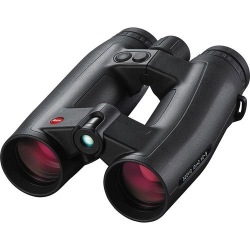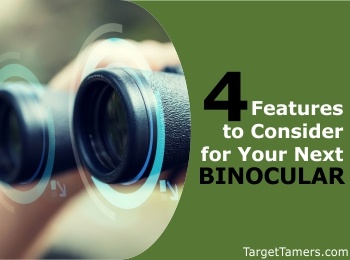
With so many whispers here and there about what's good and what's bad on a binocular, it's hard to determine who to listen to - the expert? the fellow hunter? the Amazon reviewer?
Well, don't you worry yourself anymore.
We have written this article to help make you an informed binocular buyer about all those fancy trappings.
We'll go over the ups and downs of zoom binoculars, the pros and cons of rangefinder binoculars, and even image stabilization features. And, we'll also discuss a very controversial and not so fashionable feature to be aware of.
But, if you're already shaking your head and "tsk-tsk-tsk"-ing at me with finger wagging and all, I have five words for you - don't be such a critic! You'll never know what you're missing out on if you don't give it a try!
And, if you have and you didn't like it, try a better brand this time.
Why Are These Binocular Features Often Avoided?
Usually, it's the high-end binoculars that are going to sport additional features that often raises the price significantly, and why? Because it means more advanced technology, more expert engineering, and more manufacturing processing steps.
The sad thing about it is, some optics manufacturers attempt to provide extra features with the lowest cost possible and it usually just ends up being a mess of an optic. This is usually what scares away most hunters from any additional features and why premium optics often get a bad rep as soon as "zoom" or "laser rangefinding" is mentioned.
This creates a very "in the box" attitude that deters hunters from being able to truly maximize their potential for success while out in the field. Are you one of them?
But, if you're brave and willing to venture out into the unknown, you might find that you've been missing out on some cool and nifty optic perks all this time. Here, we'll give you all the specific tell-tale signs to be aware of when looking to purchase quality binoculars with these features.
Now, let's get into correcting the avoidance attitude...
1. Zoom Binoculars
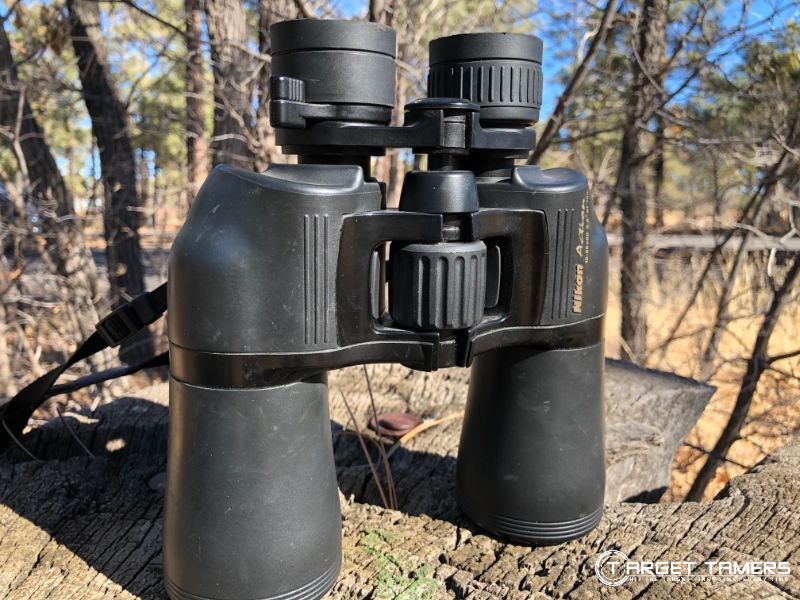
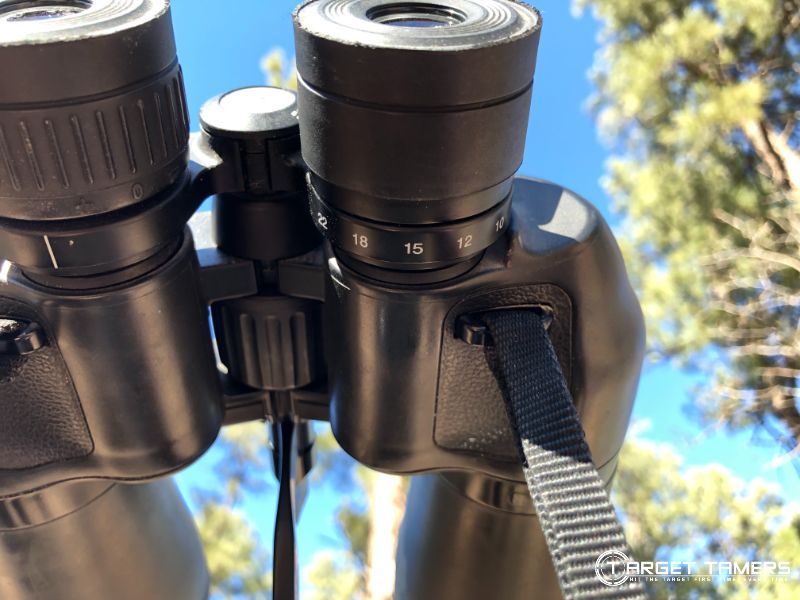
If you're considering a zoom binocular, then you're certainly going to appreciate the ability to glass a wide, open area, find your target, and then zoom right on in for fine details.
You can immediately spot a variable/zoom power binocular just by the model name - a number followed by a dash then by another number.
For example, 10-30X - 10X is the lowest magnifying power and 30X is the highest magnifying power.
Keep in mind that there are variable power binoculars that are not zoom binoculars. By using different eyepieces, you can have a different, fixed magnification.
These are identifiable by the hyphen, for example, 25/40X - one eyepiece has 25X power, and the other has 40X power.
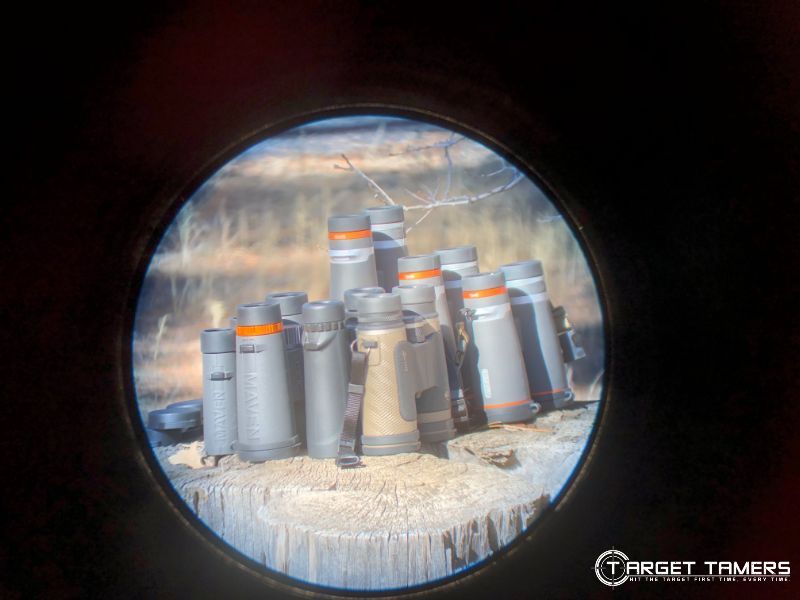
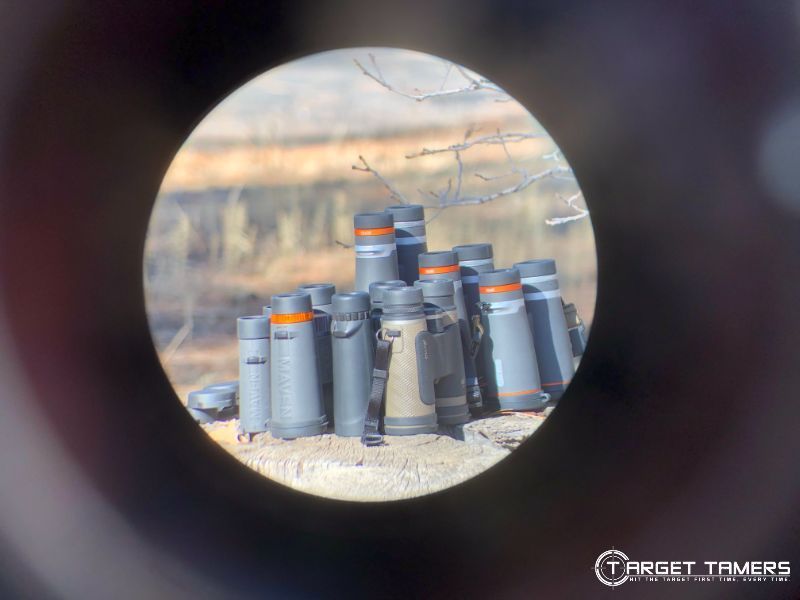
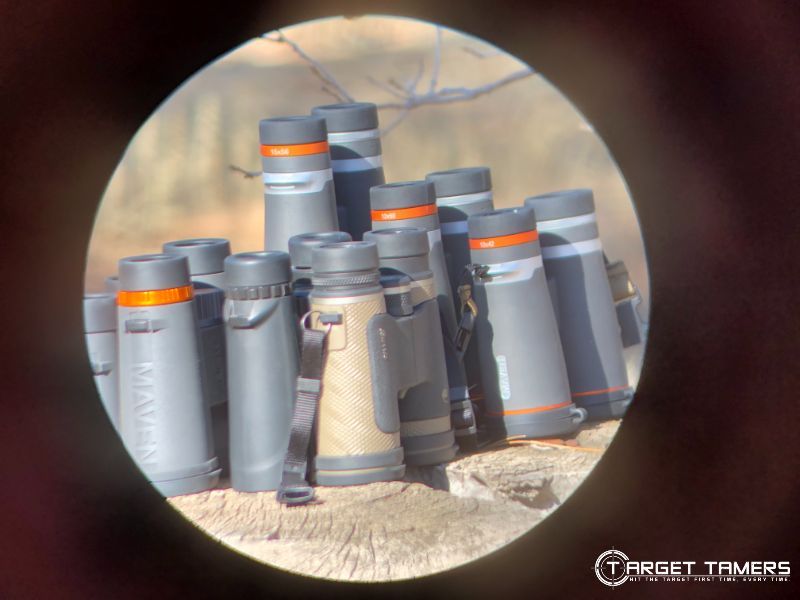
How do Zoom Binoculars Work?
Without getting way too technical, let me explain it as simply as I can in step-by-step form.
Step 1
Binoculars are two separate optic pieces, and the idea is to get both the left and the right magnifying mechanisms to be on the same magnifying plane.
Step 2
This is achieved by using a flexible linkage band or board that connects both the left and the right zooming mechanisms together.
Step 3
Because of this type of system, there's always going to be slop or slack to one of the sides every time you change the power.
Step 4
This creates a less than perfect image because it's practically impossible to get both sides on the exact same magnifying planes at the same time.
Benefits of Zoom Binoculars:
- Versatile and convenient
- Ability to move from high power to extremely high power in one device
- Ability to see in-depth, intimate, and close-up details
- Zoom found on all sizes of binoculars, from compact to full-size
Drawbacks of Zoom Binoculars:
- Reduced field of view
- Fuzzy images the higher the power
- Collimation problems; both eyepieces are never quite on the same power range
- Steady picture is compromised the higher the power
- May require extra accessories, such as tripod for steady glassing
- Binoculars with zoom are often heavier in weight
Tips for Buying a Zoom Binocular
TIP 1: Buy from a brand that you trust and that offers a warranty.
TIP 2: When considering a zoom binocular, look for one with the widest field of view.
TIP 3: Consider a variable binocular with different fixed eyepieces for further zooming power.
TIP 4: Some very expensive and highly-respected optics brands like Swarovski, Steiner, and Zeiss don't offer zoom binoculars.
TIP 5: There are some manufacturers that do make them and do it rather well. These are Celestron, Nikon, and Bushnell, to name to a few.
2. Laser Rangefinder Binoculars
This is a feature that's very popular with hunters, especially when accurate distances must be known.
With these, hunters can combine their binoculars and laser rangefinders into one device. Now the only other optic you should be toting around is the scope on your rifle.
You can find rangefinder binoculars with the basic distance measuring feature or with more added capabilities.
Rangefinding binoculars can also be found on binoculars that have an internal compass, a GPS, or even a digital bubble level. This information can also be displayed on LCD screens.
Some rangefinding binoculars may be illuminated.
How do Laser Rangefinding Binoculars Work?
Step 1
There is an invisible, internal laser that's emitted from the binocular to be reflected off an object.
Step 2
The time it takes to hit the target and for that light to return is measured and then converted to distance which can be in either meters or yards.
Step 3
The distance is then displayed on the lenses inside the binocular. Some rangefinding binoculars have an LCD screen that will display the distance.
Step 4
Some rangefinder binoculars also have a reticle, inclinometer for angles, and advanced technology software to provide an adjusted distance.
Benefits of Rangefinder Binoculars:
- Provides you with distances to your target
- Can provide angles for uphill and downhill shots
- Can provide adjusted distances for a true distance to the target
- Can provide a reticle to estimate distance and size of target
- Convenient and easy to use
- Combines laser rangefinder and binocular into one device
- Saves time glassing
- Can provide ballistic functions
Disadvantages of Rangefinder Binoculars:
- Requires a battery source
- Is often very expensive
Tips for Buying a Rangefinding Binocular
TIP 1: Consider optical quality first. If the binocular performs well at its fundamental function, a magnifying optic, the likelihood of acquiring a reliable and accurate distance will be much easier to trust.
TIP 2: Before you buy a laser rangefinder binocular, determine and find one that has the ranging distances you need. For example, extreme long range hunters may want a rangefinding binocular that can provide distances out to 1600 yards.
TIP 3: You might not need a rangefinding binocular unless you're hunting in unpredictable, mountainous, and steep-angled terrain.
TIP 4: Rangefinding binoculars are also extremely useful to bow hunters, especially those who hunt from tree blinds, stands, etc.
3. Image Stabilization Binoculars
Skip the tripod and just pay for image stabilization! Why fix yourself to one spot if you can still stalk and have a steady image at the same time?
Image stabilization binoculars can be electronically or mechanically powered.
This feature is only seen on very expensive binoculars.
How do Image Stabilization Binoculars Work?
Step 1
When glassing, especially at high magnifications, any slight movements and tremors of the hands will create a very shaky image when glassing. To address this...
Step 2
There will be a button on the binocular that you can depress to activate internal mechanisms to create a steady image.
Step 3
If the bino uses an active system, it will electronically sense the movement and adjustments to the prisms will be made. If the binocular uses a passive system, pressing the button will shift and move the prisms, sometimes out of their housing assembly, to correct for binocular movement.
Benefits of Image Stabilization Binoculars:
- No tripod needed
- Steady images for clear viewing instantly
- Convenient for use for all sorts of outdoor activities
- Can reduce the shaky image for viewing moving targets
Drawbacks of Image Stabilization Binoculars:
- Very expensive feature
- Adds on more weight
- Often found on marine, astronomy, and aviator binoculars
- Hunters that range sub-250 yard targets don't need it
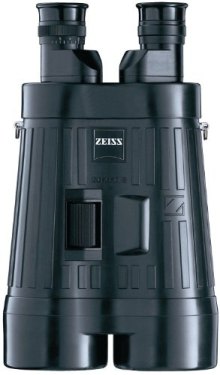
Tips for Buying Image Stabilizing Binoculars
TIP 1: If you find image stabilization on a binocular that's less than $1000, you might want to see what other people have said about it before you buy it. It's usually a very pricey feature if it's been made right.
TIP 2: If you glass and shoot within 250 yards, you won't need this feature. But, if you glass extreme long ranges or you typically would use a tripod to eliminate hand shaking, you might want to fork out the cash for an image stabilization binocular.
TIP 3: Only buy this feature from a brand that you trust with a warranty.
4. Ruby Coated Binoculars
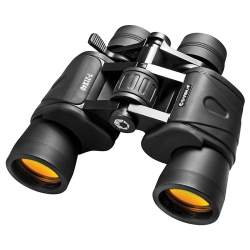
The Barska Gladiator 7-21X40 features Ruby Coated Lenses.
If you're specifically shopping the binocular market for features that minimize glare, reflections, and foliage haze, then you're definitely going to come across ruby coatings at some point in your research.
But, is it a fad or does it have optical legitimacy?
Ruby refers to the colored coating applied to binocular lenses and not to the actual gem.
This Gladiator 7-21X40 variable binocular has Barska’s Ruby UV Lenses Technology.
Rumor has it that Steiner started off the Ruby Coating fad.
Zeiss, Leica, and Swarovski don't dabble with ruby coatings. If you take this as a not-to-buy cue, that's on you.
Not all ruby coatings are made equal.
How do Ruby Coatings Work?
Step 1
It's a specially formulated external coating that gets applied to the objective lenses.
Step 2
When light makes contact with the ruby coating, it's supposed to behave in a certain way...
Step 3
The coating is formulated to reject or eliminate the red light-waves of the color spectrum.
Step 4
It's also supposed to minimize glare and reflections by allowing in as much light as possible and keep it from scattering within the optical light path. Step 4 is successfully achieved by keeping light-waves in phase with one another to reduce chromatic aberrations.
Step 5
When glassing outdoors, the red coated binoculars are supposed to minimize foliage colors and enhance wildlife hues. This produces a greenish-blue tint while glassing. (If you ask me, I don't know what this is supposed to mean... last I checked, deer were closer to reds and browns, not blues and greens.)
Benefits of Ruby Coatings:
- Minimize glare, reflections, and haze
- Enhance wildlife colors
- Filters out red from the color spectrum
Drawbacks of Ruby Coatings:
- Filters out red from the color spectrum
- Can be used to disguise optically poor binoculars
- Often used as a marketing gimmick versus any actual optical benefits
- Mostly found on low budget binoculars
- Produces a blue and green tint while glassing
Tips for Buying Binocular's with Ruby Coatings
TIP 1: Always go with a brand that you can trust. Too many times, low budget brands will use it to disguise the poor optical quality of the binocular.
TIP 2: If optical features such as high-end glass elements, well-built prism assemblies, and quality internal lens coatings are all up to par, ruby lens coatings might actually perform as they're marketed to.
TIP 3: High-end and premium binoculars with highly-efficient, colored coatings won't tint the view.
Don't Write Off These Binocular Features...
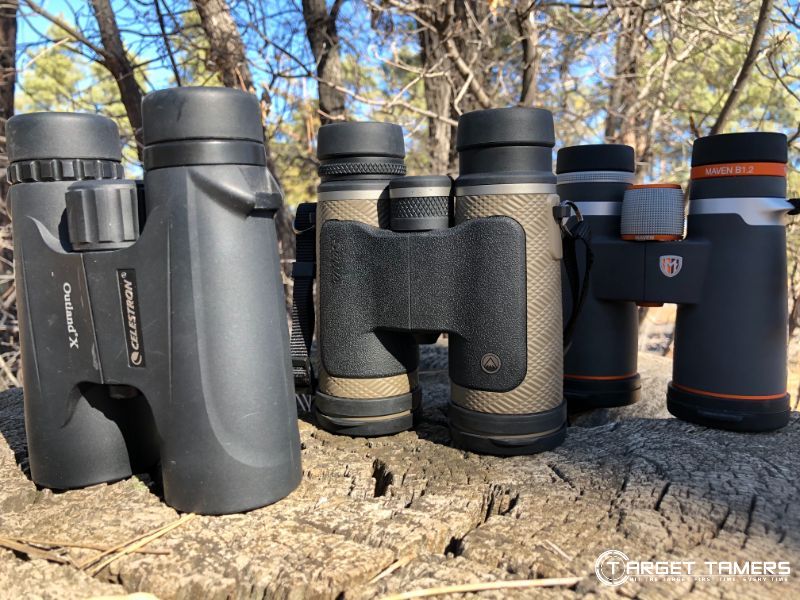
While ruby coatings are usually something that most hunters will want to steer clear of, zooming, laser rangefinding, and image stabilization features are all there to make your hunt a successful and enjoyable one.
Too many times they're given a bad rep because some amateur didn't know how to use it right or it was purchased from a less than reputable brand.
Sometimes, those extra trappings are exactly what you need to make the most of your hunt. You don't always have to be the bare-basics and practical kind of hunter, you can splurge and give those fancy bells and whistles a run for their money.
You might just find that you'll be hooked for life.
Know Which Bino Features You Want (and Don't Want)? Get Binocular Shopping Here!
Further Reading

